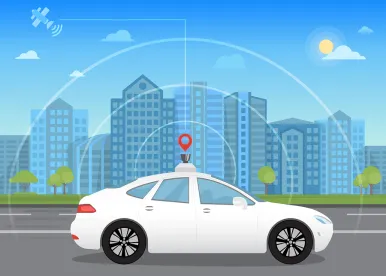On April 6th, the California Public Utilities Commission (CPUC) issued a Proposed Decision authorizing pilot testing for autonomous vehicles (AVs) in California. This action follows up on the California DMV’s permitting rules for AVs in California, which would have allowed driverless testing and deployment permits to issue as early as April 2 of this year. The DMV’s action was big news when it broke at the end of February; it meant that AVs could be deployed without any human in the vehicle. Now, the CPUC has proposed a pilot to allow the use of driverless test vehicles with passengers inside as soon as this summer.
While shared and electric mobility has already been deployed at scale, the road ahead for autonomy is still evolving. California is working to tackle this third pillar, and prior to the CPUC’s Proposed Decision, companies like Uber and GM Cruise had urged the Commission to move forward to enable the use of AVs for passenger transportation under existing regulatory frameworks. Lyft encouraged the Commission to address AVs in a rulemaking, noting that it “ma[de] little sense” to wait for Congress to act, or to “scramble” to regulate after AVs are already deployed en masse.
But now that the Proposed Decision has been published, stakeholders need to make sense of it.
The Proposed Decision sets up regulatory frameworks for pilots of “drivered” autonomous testing and “driverless” autonomous testing. In each scenario, the Commission sets out a number of significant requirements, such as, among others:
-
Test AVs must have been in DMV-permitted drivered or driverless operation on California public roads for a minimum of 90 days, and companies must include in their 90-day attestation reporting on data such as disengagements, collisions, hours of operation, and operating environment.
-
No fare-splitting for driverless passenger service is permitted (in other words, no ridesharing in driverless cars).
-
A host of data reporting requirements apply, including reporting, within 24 hours, all communications between the passenger and the remote operator, and monthly public reporting of several other metrics (e.g., vehicle miles traveled (VMT), wait time, etc.).
The tech community has expressed concerns about the CPUC’s draft regulations. In a comment letter filed on April 26th, a group of coalitions representing a large number of multinational technology and automotive companies expressed concerns about CPUC’s Proposed Decision. The coalitions argued that companies should be permitted to charge a fare during pilot testing; that data requirements were overly intrusive; that fare-splitting prevents shared mobility; that the applicability of driver requirements were overly broad; and that data requirements would cause unnecessary delay and pose a risk to privacy and confidentiality.
There will no doubt be further opportunity to refine the CPUC’s longer-term approach to AVs and the regulatory frameworks at play. As part of the CPUC’s Proposed Decision, the Commission has indicated that its Transportation Enforcement Branch will hold a workshop to allow AV stakeholders to better understand the Proposed Decision and to interface with CPUC and DMV staff. And the rulemaking itself (which takes on a broad range of “Passenger Carriers, Ridesharing, and New Online-Enabled Transportation Services” issues) promises additional opportunities for engagement beyond this Proposed Decision. For example, in its April 27 Scoping Memo, which outlines the next steps of the same proceeding, the Commission signaled its intent to consider the possibility of designating an entirely new regulatory category — so-called “Autonomous Vehicle Carriers” (AVC) — to deal with outstanding AVs issues. AV companies have commented that it would be appropriate to simply regulate AVs within the existing categories: Transportation Network Companies (TNCs) or Charter-Party Carriers (TCPs).
Twenty-two states have enacted legislation related to autonomous vehicles, but California’s intensive regulatory development of a new testing regime has the potential to set the tone for a national discussion around implementation. Other states have focused on specific issues, such as definition-setting, data generation and cybersecurity rules, and truck platooning standards. In Arizona and Nevada, autonomous vehicle operators remain free to test without a driver. Meanwhile, in Washington, D.C., the possibility of preemptive federal legislation still looms; and the Department of Transportation continues to provide guidance and seek stakeholder comment.
For now, California companies and regulators have the chance to put pen to paper on a first draft. Given the preponderance of AV companies based in California – including Uber, Lyft, Waymo, and Zoox, not to mention the plethora of technology companies working at the seams of autonomous technology development, such as Nuro, Nauto, and Ridecell — that draft will almost certainly have implications beyond California’s borders.
This post is part of a series of our Internet of Things Autonomous Vehicles Updates. Our introductory AV post discussed policy trends in the U.S., Europe, and China. Next up we will be exploring similar AV testing developments in both China and Europe.




 />i
/>i
